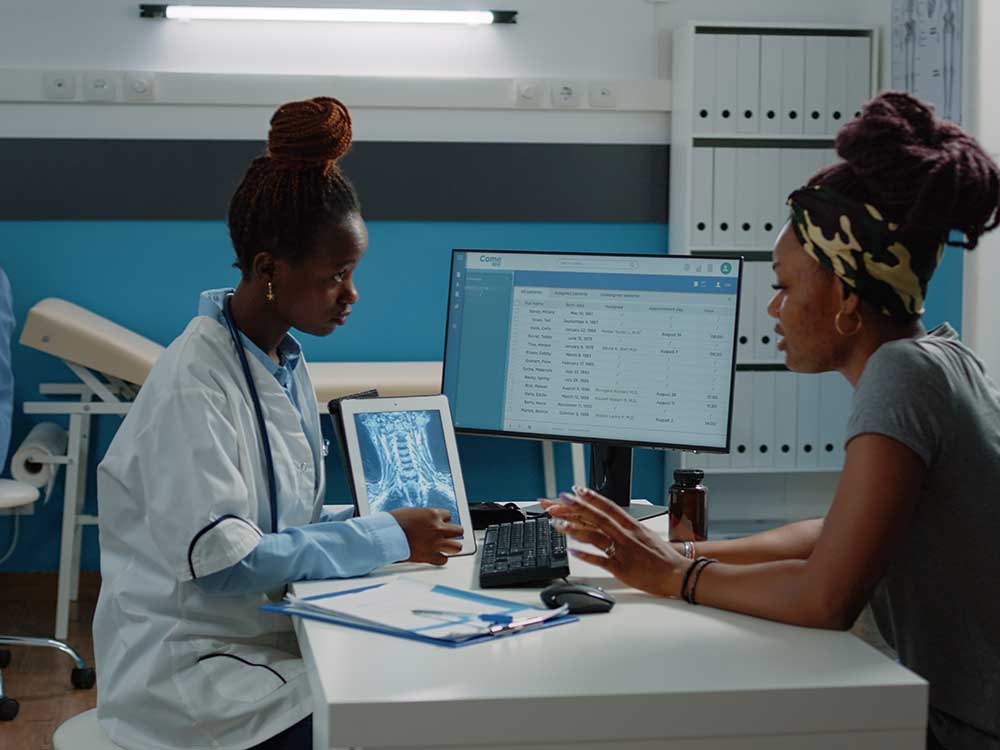Ideal Practices in Medical Management for Improving Effectiveness and Decreasing Costs
In the ever-evolving landscape of healthcare, the pursuit of ideal techniques in medical administration is extremely important for boosting effectiveness and curbing expenditures. By incorporating sophisticated technologies such as digital wellness records and telemedicine, healthcare companies can improve procedures and enhance patient treatment. Nevertheless, technology alone is not a cure all; enhancing resource appropriation and promoting collaborative interaction among treatment teams are equally critical (medical administration). As companies strive to balance top quality and expense, what techniques should be focused on to achieve these twin objectives? The solution to these questions hold the secret to a much more lasting health care system.
Leveraging Advanced Modern Technology
In today's rapidly developing medical care landscape, leveraging innovative modern technology is no longer optional but necessary for reliable clinical management. The integration of digital solutions into healthcare systems has transformed the method centers run, enhancing procedures and boosting person treatment. Electronic Wellness Records (EHRs) are crucial, giving comprehensive patient information that can be accessed immediately by authorized personnel, thus reducing redundancy and minimizing errors. By centralizing patient information, EHRs eliminate the need for difficult documentation and promote smooth interaction among health care suppliers.
Telemedicine is an additional technological advancement that has revolutionized person interaction. It offers comfort for both clients and healthcare experts by enabling remote consultations, which can minimize the need for in-person check outs and optimize visit scheduling. Furthermore, telehealth platforms can prolong healthcare access to country or underserved areas, linking gaps in treatment distribution.
In addition, making use of Artificial Intelligence (AI) and machine discovering is coming to be significantly prevalent in anticipating analytics, enabling early discovery of prospective health and wellness problems and even more educated decision-making. These technologies, when integrated properly, can improve diagnostic precision and personalize client therapy strategies, ultimately resulting in boosted healthcare outcomes and operational effectiveness.
Optimizing Source Allocation
Efficient source appropriation is essential for taking full advantage of the performance of clinical management. By strategically managing resources such as workers, devices, and financial resources, medical care centers can significantly enhance their operational performance, enhance individual results, and lower unneeded expenses. The initial action in maximizing source appropriation entails conducting a comprehensive assessment of current assets and identifying areas where resources might be underutilized or exhausted. This analysis needs to be data-driven, making use of metrics and analytics to educate decision-making procedures.
Focusing on resource appropriation based on patient demands and service demands is important. This involves aligning sources with high-demand locations, such as emergency treatment or specialized treatments, to guarantee timely and effective person treatment. Implementing flexible staffing versions can additionally maximize labor resources by readjusting workers allotment in feedback to changing patient volumes. Additionally, embracing telemedicine and various other technological options can minimize physical source restrictions by supplying alternative methods for patient-provider interactions.
Financial resources must be diligently kept an eye on and alloted with strategic foresight to support both temporary functional demands and long-term institutional goals. This includes investing in training programs that improve team expertises and adopting energy-efficient practices that decrease operational expenses (medical administration). Eventually, a maximized source appropriation strategy fosters a sustainable health care atmosphere that is responsive, effective, and economically prudent
Streamlining Process Processes
When health care facilities goal to enhance functional performance, simplifying operations procedures ends up being a crucial emphasis. Effective process lessen redundancy, get rid of unnecessary steps, and enhance coordination among healthcare professionals. This strategy not just speeds up service delivery but also enhances the top quality of person treatment.

Next, innovation assimilation plays a considerable duty in improving operations. Implementing electronic wellness records (EHRs) and electronic medical professional order entry (CPOE) systems minimizes paperwork, reduces human mistake, and ensures details is accessible to all appropriate workers. Furthermore, leveraging telemedicine systems can enhance individual consultations and follow-ups, minimizing the stress on physical infrastructure.

Ultimately, streamlined workflows cause set you back reductions and enhanced client complete satisfaction, promoting a much more sustainable healthcare environment.
Enhancing Information Monitoring
Structure upon streamlined workflows, optimizing information monitoring comes to be a crucial element in advancing healthcare management. Reliable data management systems are crucial for keeping exact client records, boosting decision-making, and making certain compliance with regulatory criteria. By carrying out robust information monitoring services, healthcare centers can improve the quality of person care while simultaneously lowering operational costs.
One trick aspect of boosting data monitoring is the combination of advanced digital health document (EHR) systems. These systems help with the smooth exchange of client details across various departments, lowering duplication of examinations and reducing mistakes. A well-designed EHR system sustains information analytics, allowing doctor to identify patterns and make educated decisions pertaining to client treatment.
Moreover, securing patient data is extremely important. Adopting detailed cybersecurity measures, including security and regular audits, guarantees the honesty and confidentiality of delicate details. This not only safeguards individuals but likewise keeps the institution's credibility.
Purchasing personnel training is an additional critical element. Informing medical care professionals on data administration methods boosts their capacity to effectively utilize modern technology, leading to improved individual outcomes. In verdict, boosting information management through advanced innovation and extensive training is essential for achieving efficiency and cost reduction in medical management.
Fostering Collaborative Interaction
A crucial component beforehand medical management is cultivating joint interaction amongst health care experts. Efficient communication is paramount for ensuring seamless person treatment, enhancing treatment outcomes, and minimizing mistakes. By urging open discussion and sychronisation across multidisciplinary groups, medical care companies can enhance their operational performance and minimize unnecessary costs.
Central to this strategy is the assimilation of communication technologies such as digital health and wellness records (EHRs) and secure messaging systems, which help with the rapid exchange of crucial person info. These tools make it possible for health care companies to access and share information in real click this time, ensuring that all group members are educated and aligned in their decision-making procedures. Routine group meetings and interdisciplinary rounds can better promote a culture of cooperation and responsibility.
Educating programs concentrated on boosting communication abilities are also necessary. These programs can help personnel create the capability to share information plainly and pay attention actively, therefore lowering misunderstandings and cultivating a supportive workplace. Furthermore, embracing standard interaction protocols, such as SBAR (Circumstance, History, Assessment, Suggestion), can simplify the exchange of information, guaranteeing that essential details are conveyed succinctly additional resources and successfully. Inevitably, fostering collective interaction brings about improved healthcare shipment and expense financial savings (medical administration).

Verdict
Including innovative modern technology, such as digital wellness documents and telemedicine, along with maximized source appropriation and streamlined workflow procedures, is vital for improving efficiency in clinical management. Effective data administration and fostering joint communication amongst health care teams are vital for reducing redundancies and boosting treatment top quality. By focusing on preventive care and participating in quality renovation campaigns, health care companies can accomplish significant cost financial savings and enhanced client outcomes, therefore making certain sustainable healthcare distribution in a progressively complicated environment.